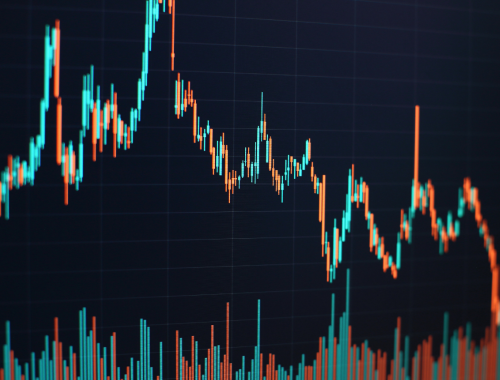Difference Between Spirometry and Flow Volume Loop
Spirometry is a set of tests that measures the quantity of air inspired or expired. Three modalities that this procedure assesses include volume, time, and flow. In a graph, a spirogram illustrates airflow on the y-axis (in L) against time on the x-axis (in seconds). The flow-volume loop is the illustration of inspiratory or expiratory airflow on the y-axis (in L/second) against volume on the x-axis (in L).

What is spirometry?
Definition:
Spirometry is a set of tests that measures the quantity of air inspired or expired. Three modalities that this procedure assesses include volume, time, and flow.
Uses:
Spirometry determines important lung volumes that aid in assessing lung function. It helps to identify lung pathologies, quantify lung damage, assess lung function after long-term occupational dirt exposure, and determine drug efficacy.
Interpretation:
Spirometry measures several important lung volumes. It measures forced expiratory volume in 1 second (FEV1), forced vital capacity (FVC), the maximum forced amount of air that can be exhaled after maximum inhalation, and Vital capacity (VC), the maximum amount of air that can be exhaled, at a relaxed pace, after maximum inhalation. Spirometry also measures peak expiratory flow (PEF), forced expiratory flow, and inspiratory vital capacity (IVC) which is the maximum inspiration after a full expiration. The most important relation that can be evaluated via spirometry is the ratio of FEV1/FVC.
Contraindications:
Any of these recent events contraindicate the use of spirometry: pneumothorax, history of myocardial infarction or pulmonary embolism, aneurysms of any kind, hemoptysis, complaints of nausea or vomiting, recent surgeries especially eye surgery or abdominal surgery.

What is a flow-volume loop?
Definition:
A flow-volume loop is the illustration of inspiratory or expiratory airflow on the y-axis (in L/second) against volume on the x-axis (in L).
Uses:
Flow-volume loop diagrams help in identifying lung disorders and differentiating between obstructive, mixed, and restrictive lung pathologies. These are regularly used to assess the resolution of lung disorders post-surgery and to detect airway involvement in neuromuscular diseases and in Parkinson’s disease.
Interpretation:
The clinical significance of the flow volume loop is that it predicts whether, at a particular lung volume, the airflow is normal or not. Obstructive lung disorders, restrictive lung diseases, and anatomical airway abnormalities can be detected via the flow-volume loop. Relying on spirometry results alone without interpreting the flow-volume loop leads to a distorted diagnosis of respiratory ailments.
Difference between spirometry and flow volume loop
Definition:
Spirometry is a set of tests that measures the quantity of air inspired or expired. Three modalities that this procedure assesses include volume, time, and flow. In a graph, a spirogram illustrates airflow on the y-axis (in L) against time on the x-axis (in seconds). The flow-volume loop is the illustration of inspiratory or expiratory airflow on the y-axis (in L/second) against volume on the x-axis (in L).
Uses:
Spirometry determines important lung volumes that aid in assessing lung function. It helps to identify lung pathologies, quantify lung damage, assess lung function after long-term occupational dirt exposure, and determine drug efficacy. Flow-volume loop diagrams help in identifying lung disorders and differentiating between obstructive, mixed, and restrictive lung pathologies.
Interpretation:
Spirometry measures several important lung volumes such as forced expiratory volume in 1 second (FEV1), forced vital capacity (FVC), Vital capacity (VC), Peak expiratory flow (PEF), inspiratory vital capacity (IVC), and the ratio of FEV1/FVC.
The clinical significance of the flow volume loop is that it predicts whether, at a particular lung volume, the airflow is normal or not. Obstructive lung disorders, restrictive lung diseases, and anatomical airway abnormalities can be detected via the flow-volume loop.
Table of differences between spirometry and flow volume loop

FAQs
Is the flow volume loop part of spirometry?
No. Spirometry measures key lung volumes such as FEV1 and FVC whereas a flow volume loop is a graphical illustration of inspiratory or expiratory airflow against volume.
What are spirometry and flow volume loop tests?
Spirometry is a set of tests that measures the quantity of air inspired or expired. A flow volume loop test is performed by maximal expiration followed by breathing in and subsequent graphical illustration of inspiratory or expiratory airflow against volume.
What is the difference between spirometry and lung volume test?
Lung volume testing is a type of pulmonary function test. It is more specific than spirometry and determines the residual volume of the lung and lung volume at the end of a breath.
What is spirometry with FVL?
Spirometry measures key lung volumes such as FEV1 and FVC. With a flow volume loop, there is a graphical illustration of inspiratory or expiratory airflow against volume along with spirometry.
- Differences Between Reptiles and Amphibians - May 17, 2024
- Difference Between Ophthalmology and Optometry - May 15, 2024
- Difference Between Fear and Anxiety - April 2, 2024
Search DifferenceBetween.net :
Leave a Response
References :
[0]Derom, Eric, et al. "Primary care spirometry." European Respiratory Journal 31.1 (2008): 197-203.
[1]Bass, Harry. "The flow volume loop: normal standards and abnormalities in chronic obstructive pulmonary disease." Chest 63.2 (1973): 171-176.
[2]Barreiro, Timothy, and Irene Perillo. "An approach to interpreting spirometry." American family physician 69.5 (2004): 1107-1114.
